Video Analysis: The Tale of the Kwasniok Table
31 games in, Jena was 8 points away from safety.
7 games later, they finish 1 point ahead of the relegation zone.
Coach Lukas Kwasniok introduced his own table for these 7 games and put it in the change room.
They won 6 of the games.
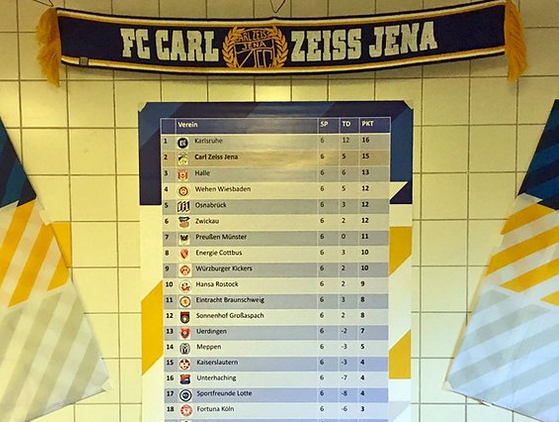
But the story starts earlier. They used to operate in what was more of a 4-4-2/4-2-2-2. They only lost 4 of the first 13 games with Kwasniok in charge. But also won just a single one. Too many draws, too few goals scored. https://twitter.com/EduardVSchmidt/status/1089448776841027585
Before the game versus Cottbus, Kwasniok reacted and changed the formation. Initially a 3-1-4-2/5-3-2 was used. Most teams in 3. Liga play in a standard 4-4-2. So, the spaces left open by it can be occupied well in possession. In pressing, you add a free man in the back.
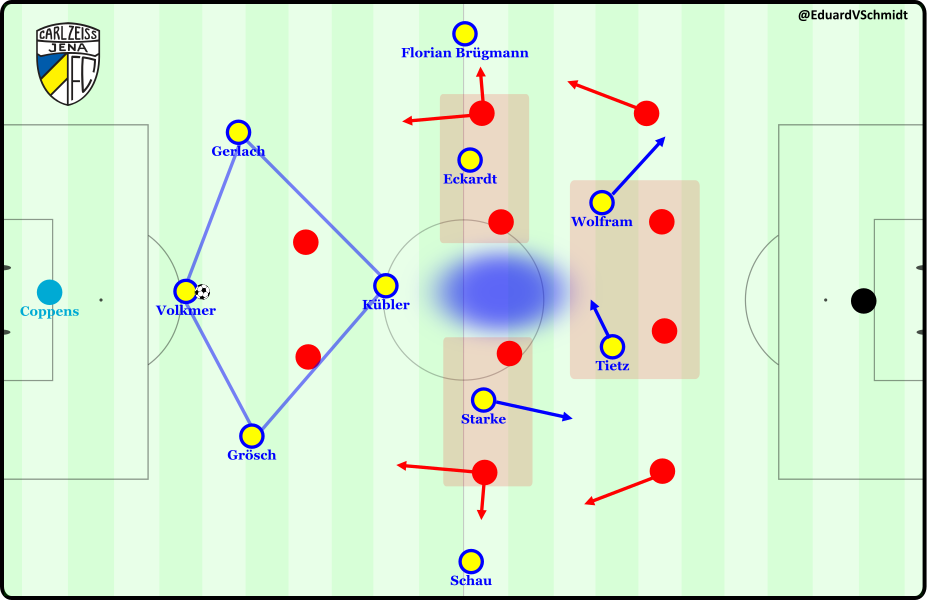
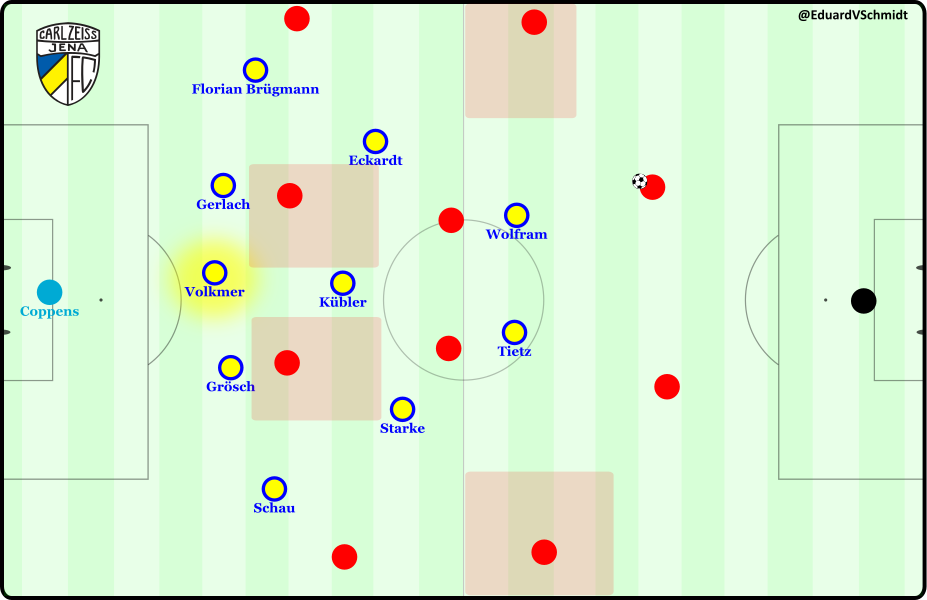
Already in the second half of that game he reacted and slightly adjusted the formation to a 3-2-4-1 in possession and a 5-2-3/5-4-1 in pressing. The roles fit better to the player profiles here, highlighting set structures on the wing and clearer responsibilities in pressing.
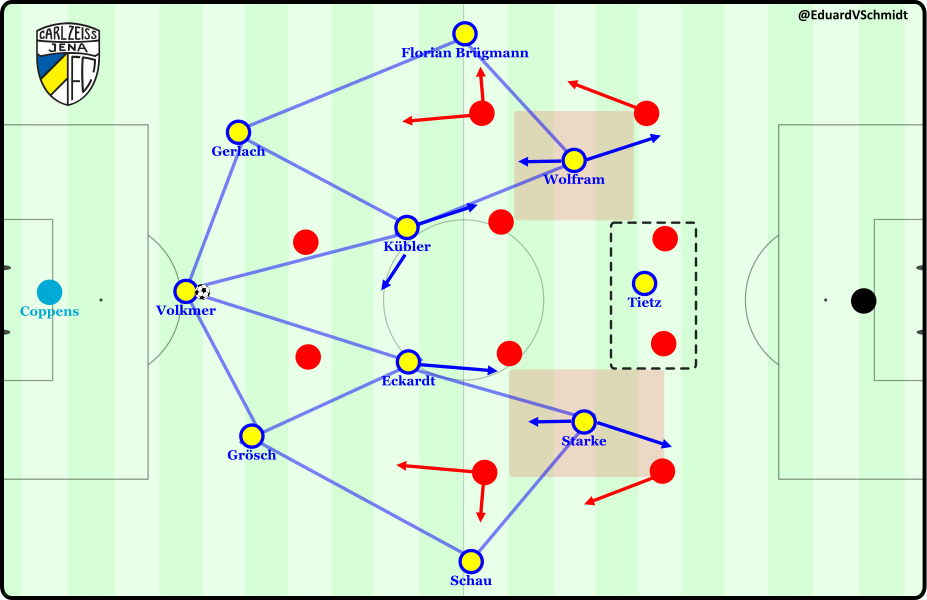
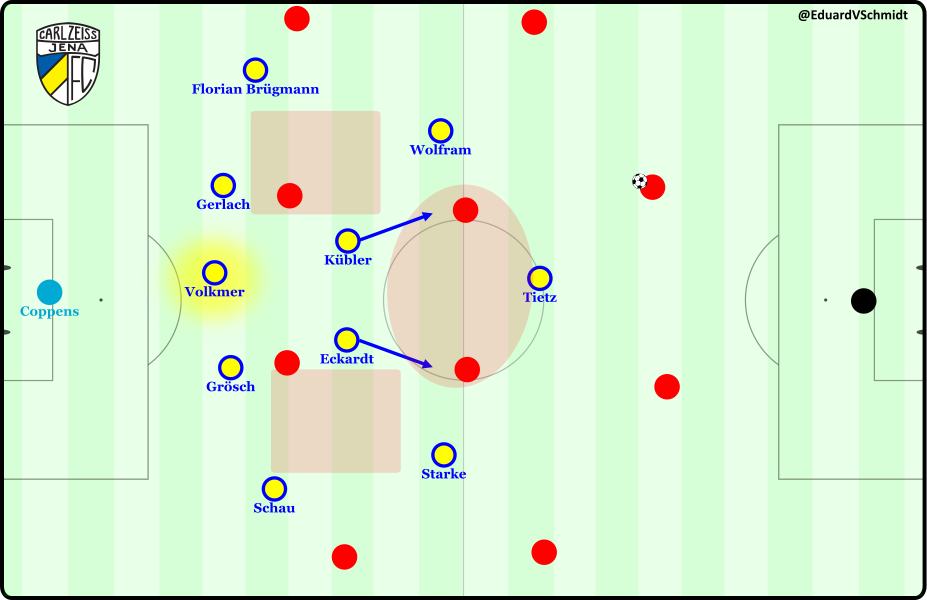
The latter formation became the standard for most of the remaining games. But as you will see later, the differences are not very big. It’s more important to take a closer look at the principles used. The first one: Covering depth with the spare man.
Jena focused heavily on closing the center, especially in the 5-3-2. When necessary, they completely blocked it by being compact. Often though, they would leave certain gaps open to use them as traps for the opponent. Here, they would quickly collapse and ideally win the ball.
Consequently, most teams tried to play on the wing even more than already. For that, different methods of shifting were used. If the ball could be passed behind one of the WBs, the side CBs could defend spaces on the wing while not having to change direction.
Not only the bigger picture in pressing is important here but also smaller details: Jena are excellent in changing the rhythm and creating surprising access anticipating back passes and pressing from the blind side. Situationally, a high pressing is used right away.
Problems: The aggressive forward defending from the back line can be exploited by opponents playing in behind, especially using of lay-offs. When there’s no access, man-orientations become problematic. This is the case when the gaps usually used as pressing triggers get too big.
At the same time, there’s generally a 1 versus 1 for the WB against the winger. The closer the ball is to the box of Jena, the more the CBs focus on defending crosses. Thus, wing breakthroughs are somewhat accepted – also relying on Jo Coppens being an excellent shot stopper.
Short break: Jena are generally pretty intense in all phases of the game. This doesn’t only help in regular pressing but also in counterpressing. Adding to that, they manage it well to secure possession after such rather wild phases. Something not many teams in 3. Liga can do.
Once possession is settled, the main CB positions himself deeper and is avalable for back passes. The players wait to attract pressure in build-up before passing the ball (again: change of rhythm!). Otherwise, a dribbling can be used. At least one midfielder always supports.
For all this, the half-spaces play a crucial role as most opponents have problems in covering them properly in their 4-4-2, even when adjusting their positions. Through having both side CBs and CMs always there, Jena have a solid axis for the possession game.
Focusing the game around the half-spaces also makes it easier to create wing overloads – a key feature. They move well in relation to each other and have numbers around the ball for counterpressing already. Ball losses like in the previous video rarely have further consequences.
This general setup is mixed with individual movements, adding an unexpected element to the structured positional play. This is where you see key principles: Positioning in gaps/on different lines, blind side movement, dragging opponents away to create space, disguised passes etc.
Of course it’s not like they easily outplay every opponent. So, long balls are a thing as well. There are some chaotic phases when Jena use them too much. But overall, they pick fitting situations where they can quickly advance thanks to long balls and then start to combine again.
In all this, Phillip Tietz plays a crucial role. For 3. Liga he’s an exceptional and complete striker. He’s very good at playing with the back to goal, executing all kinds of lay-offs well. At the same time, he has a good feeling for when to attack free space. And he scores goals.
The miracle of Jena is a mix of having luck that was previously missing (regression to the mean) and a smart tactical change at the right time. But none of this would have been possible without working principles of play. Congratulations to Lukas Kwasniok and Team!
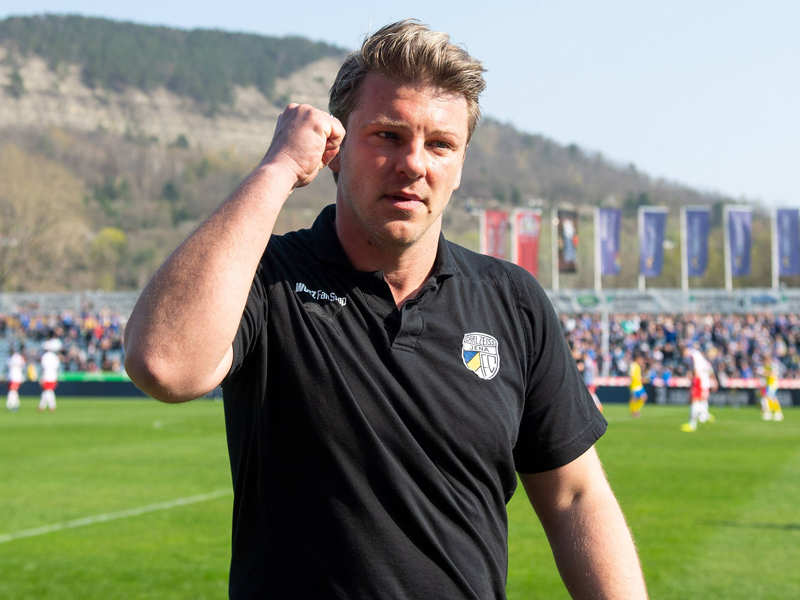
1 Kommentar Alle anzeigen
QG June 6, 2019 um 9:35 pm
Thanks for the great article, I was waiting for someone to look at this cool story!